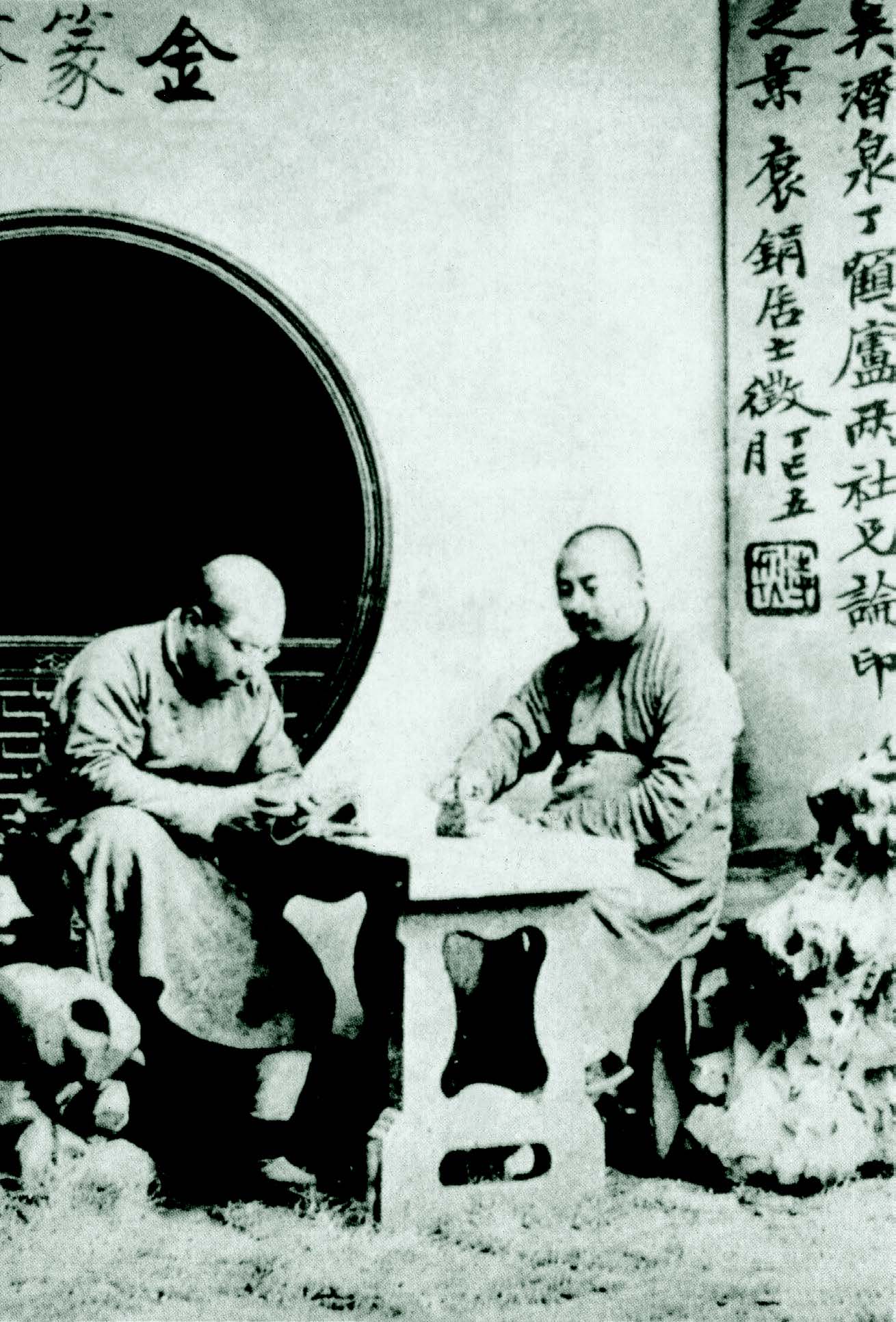
A scene of the two founder Ding Ren and Wu Ying when they where discussing seal (photographed in 1917)
In the last year of King Guangxu’s reign in Qing Dynasty, four young seal engravers: Ding Fuzhi, Wang Ti, Ye Weiming and Wu Yin often gathered in a corner of Gushan and engraved seals, commented on seal cuttings together with many enthusiasts. During their exchanges of opinions, they made up their mind to emulate sages to set up a society in Gushan. Thus, "the society was named after its located place, and people were gathered because of seal". People with same interest in seal cutting all offered private assets to donate to land purchase in Gushan and to build the roughcast premises of the society, which happened in the 30th year of Guangxu in Qing Dynasty (1904).
Founder Ding Ren (1879-1949), whose previous given name was Renyou, was styled Fuzhi. With his literary name Helu, Ding named his studio Xiao Long Hong Guan. Born in family of scholars in Hangzhou, Zhejiang Province, he was reputed as master seal engraver of Zhejiang school, whose works are beautiful and refined. He was good at oracle calligraphy, and his paintings are elegant, gorgeous and touching. He had a wealth of collection of the seals of the Eight Masters of Xiling.
Founder Wang Ti (1880-1960), whose previous given name was Shouqi, was styled Weiji and also known for his literary name Fu’an. He called himself Chimo the Elder, as well as Luo Cha Jiang Min, after his 70s. His studio was named Miyan Study. Wang, a Hangzhou born artist, was skilled in calligraphy, especially seal character and official script. Wang was skillful in seal engraving, whose stonework is widely recognized to endorse the soul of Zhejiang School and whose works are elegant, cultured and restrained in style, as well as pure and dignified, which make him a representative master of modern seal engraver styled in steadiness.
Founder Ye Ming (1867-1948), styled Panxin or Pinsan, was literarily named Yezhou. He gave his studio names of Tiehua Temple and Songshi Hut. In spite of his nationality from Huizhou Xin’an, he was born in a family that had lived in Hangzhou for generations. Ye was gifted in Official and Seal script in calligraphy, inscriptions and engraving seals, adhering to the principle in Qin and Han Dynasties while absorbing that of Zhejiang School. He was also a respected prober of engraving history.
Founder Wu Yin (1867-1922), whose given name was previously Jinpei, was styled Shiquan and later Shiqian. With a literary name of Qianquan, Dun’an, he called his studio Zhuan Zhou Yi or Songzhu Hall. As an expert in carving and engraving, Wu was born in Shaoxing; he inherited the artistic notions of seal engraving in Qin and Han Dynasty and Zhe School in his seal works which are simple, honest, vigorous and succinct. He was particular good at drawing landscapes, flowers and birds, and can engrave inscription on monument, and was even skilled in making inkpad, and running business.